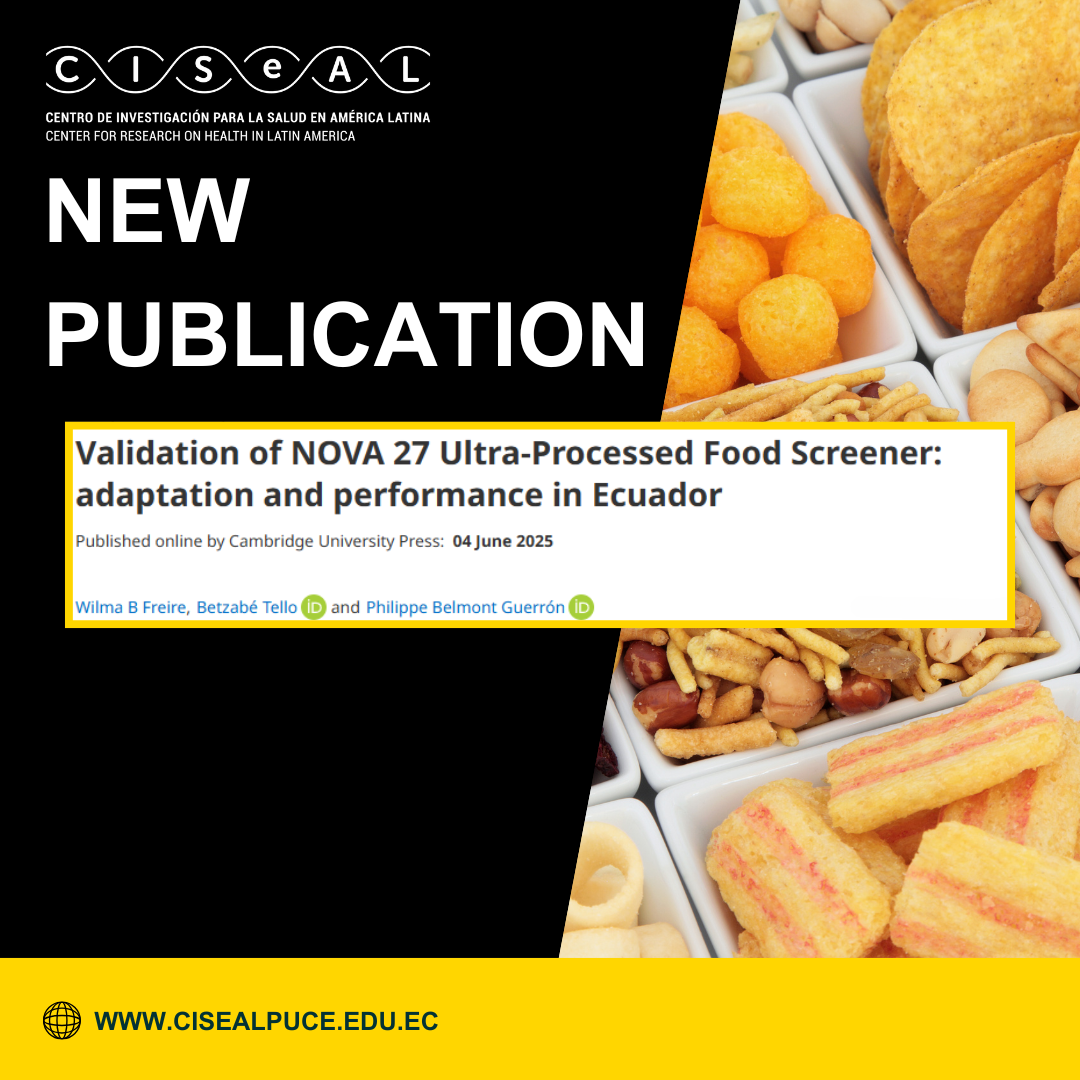
Dr. Betzabé Tello, principal researcher at CISeAL-PUCE, was part of the academic team that recently published a study that validated in Ecuador the use of the NOVA 27 Ultra-Processed Food Screener, a tool developed internationally and adapted to the Ecuadorian context. This questionnaire allows for a quick and reliable estimation of the consumption of ultra-processed products in adults.
The study was led by Dr. Wilma Freire of the Universidad San Francisco de Quito and included the participation of Dr. Philippe Belmont, adjunct researcher at CISeAL, who was in charge of the statistical validation of the instrument.
The results are framed in a context of food transition, where ultra-processed products such as soft drinks, snacks, industrial bread, sausages, and ready-to-eat meals are displacing fresh foods and traditional preparations. This increasing exposure to ultra-processed foods deteriorates the quality of the diet and affects health from an early age.
The study was developed in two phases: first, an online validation with 327 adults in Quito, and then a comparative analysis with data from the National Health and Nutrition Survey (ENSANUT-Ecu 2012), which included 3,510 adults.
One of the key findings was that the 27 food groups included in the questionnaire account for 90% of the calories coming from ultra-processed products, which confirms that the instrument efficiently captures the habitual consumption of this type of product. In other words, although there are many types of ultra-processed products on the market, the 27 subgroups selected for the screener concentrate almost all the caloric energy that comes from this type of product in the diet of Ecuadorian adults.
The concordance between the screener scores and actual consumption was high, with indices above 0.8 in different sociodemographic groups. The majority of the population consumes between 0 and 5 subgroups of ultra-processed foods per day, which already represents between 25% and 35% of daily caloric intake.
In addition, data from the Quito study (2021) show higher consumption levels than those reported in ENSANUT 2012. For example, among those who scored 5 or higher, ultra-processed foods accounted for 27.8% of calories in 2012 and 37.6% in 2021. Even with low scores, consumption is present: in people with a score of 1, the caloric contribution of ultra-processed products is already between 5% and 8%.
These results reflect a growing trend in the consumption of ultra-processed products in the Ecuadorian population and position the NOVA 27 questionnaire, already validated for the country, as a key tool for monitoring and formulating public policies aimed at healthier eating.
We invite you to learn more about this important study at the following link:



